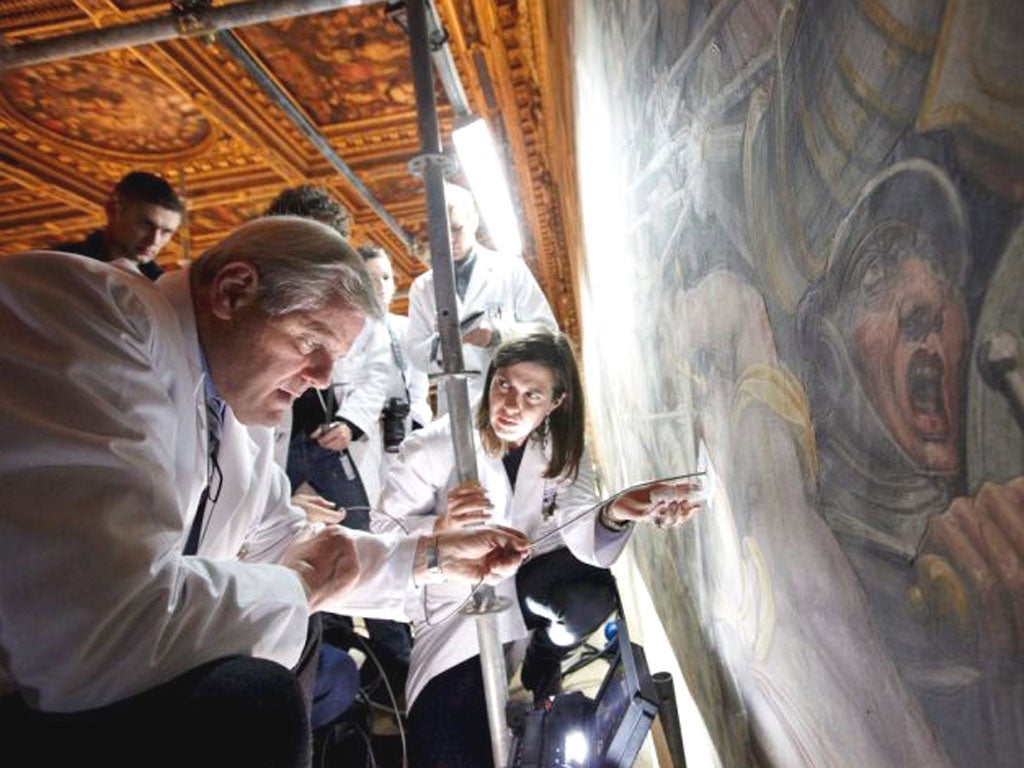Art experts find 'possible' lost da Vinci work behind fresco

Your support helps us to tell the story
From reproductive rights to climate change to Big Tech, The Independent is on the ground when the story is developing. Whether it's investigating the financials of Elon Musk's pro-Trump PAC or producing our latest documentary, 'The A Word', which shines a light on the American women fighting for reproductive rights, we know how important it is to parse out the facts from the messaging.
At such a critical moment in US history, we need reporters on the ground. Your donation allows us to keep sending journalists to speak to both sides of the story.
The Independent is trusted by Americans across the entire political spectrum. And unlike many other quality news outlets, we choose not to lock Americans out of our reporting and analysis with paywalls. We believe quality journalism should be available to everyone, paid for by those who can afford it.
Your support makes all the difference.Experts believe they are close to confirming that a lost Leonardo da Vinci masterpiece has been found in the cavity of a medieval Italian building, following the detection of paint similar to that used in the Mona Lisa.
Leonardo's legendary work, The Battle of Anghiari, is thought to lie behind the walls of Florence's Palazzo Vecchio town hall building. Another Renaissance artist Giorgio Vasari was ordered to paint over it in 1563, but he is believed to have constructed a new wall over the fresco rather than paint over the work of an artist he revered. The theory was given credence by eminent art detective Maurizio Seracini, who in 2005 found evidence of a slim cavity behind Mr Vasari's fresco, The Battle of Marciano.
For the last three months Dr Seracini has been using a special gamma camera that "sees" images hidden to human eyes. The high-tech sleuthing, which allows investigators, pictured, to probe behind the wall without having to tamper with the Vasari painting, appears to have paid off, with the discovery of black paint of the type used for the Mona Lisa.
"We also found red and beige – other colours typical of Leonardo," Dr Seracini told Ansa news agency yesterday.
Chemical testing has already been lined up for the colours that have been detected. But Dr Seracini said he was confident the da Vinci is close to being uncovered.
"I expect the state of conservation [of the fresco] to be good, or in any case the same as it was when the original wall was covered by Vasari," he said.
One of the world's top da Vinci experts, Carlo Pedretti, concurred that the fresco was concealed in the palazzo. "I really believe it's behind that wall," Mr Pedretti of the University of California in San Diego said. He added that Renaissance accounts showed "the fresco can only be there".
Join our commenting forum
Join thought-provoking conversations, follow other Independent readers and see their replies
Comments